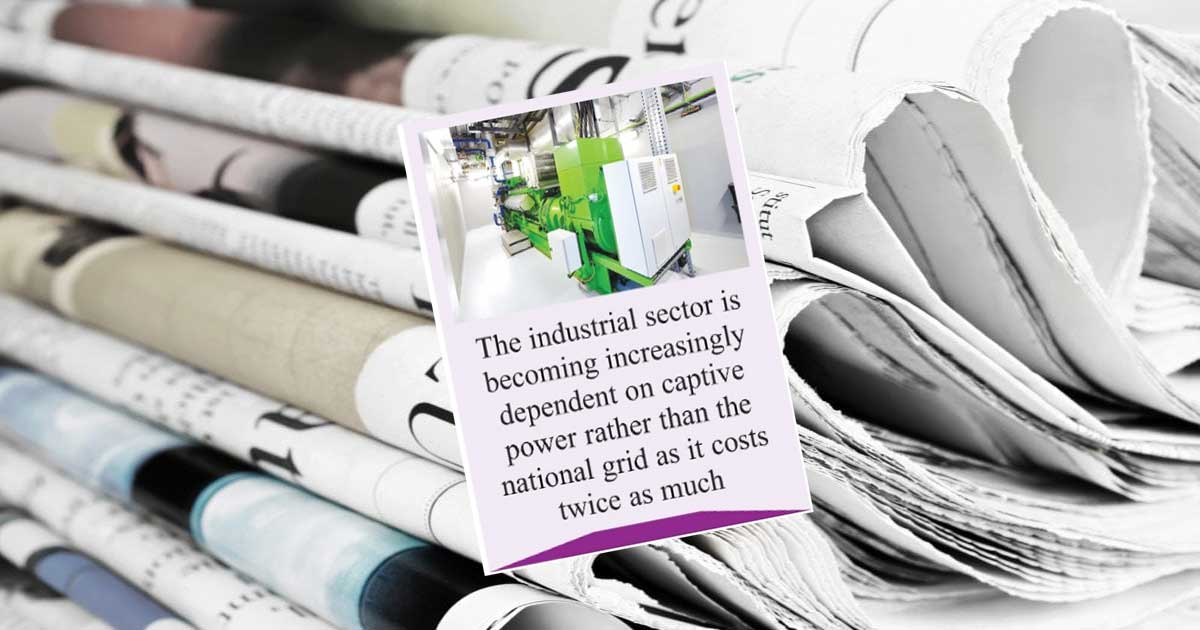There is enough power in the national grid but industrial owners are not interested because they have to pay more than twice the price per unit. As such, the industrial sector is becoming increasingly dependent on captive power rather than the national grid
Most of the industries in the country run on captive electricity. Because the industry is not getting confidence in the national grid as the supply is not uninterrupted. Although the power generation capacity in the country has increased manifold in the last decade. Still, the captive dependence on the industry continues to grow. According to the government, there are more than 46,000 production-oriented industrial establishments in the country. Among them, more than 40,000 are small and cottage industries. The remaining 6 thousand are large and medium industries. And most of the industries are running on captive power. But captive power generation is under threat due to rising gas prices in the industrial sector. This information is known from sources related to the industry.
According to related sources, currently the power generation capacity in the country is more than 26,500 megawatts. And about 3,500 megawatts of off-grid production capacity. Among them, the capacity of about 2 thousand 8 megawatts is captive. Captive power generation capacity in industry is increasing because there is enough power in the national grid but industrial owners are not very interested in it. Because industrial owners have to pay more than twice the price per unit of electricity. And because of that, the industrial sector is increasingly dependent on the captive rather than the national grid. But currently high prices and severe gas crisis are forcing entrepreneurs to move away from the benefits of captive systems.
According to sources, the raw material of ready-made garments is the maximum captive power generation capacity of textile industry owners in the country. Fuel source gas for captive industries. But currently the gas crisis is having a negative impact on industrial production. And very few entrepreneurs in the industry have two sources of funding. Industries which are dependent on captives will have to stop production if there is no gas supply. At present, those industries have to continue with rationing.
Meanwhile, regarding the existing situation, according to Jalani experts, the policy decision of the government is to move away from captives. The entire electricity sector of the country is progressing according to plan. But due to fiscal mismanagement the plan of import dependency is not working properly. As a result, the current situation is not the failure of the power sector, but the crisis is caused by financial mismanagement.
On the other hand, Mohammad Ali Khokon, President of Bangladesh Textile Mills Association (BTMA), an organization of yarn and cloth producing mill owners, said that the industry`s lifeline is captive in this country. Textile sector and captive industry together account for 35 percent of gas consumption and the rest in various sectors of the government. 16 Tk gas now 30 Tk. That is, the monthly bill was 2 crore but now it will be 4 crore. It will increase the price of industrial products.
Bangladesh Chamber of Industries (BCI) President Anwar Ul Alam Chowdhury Parvez said that large and medium industries are basically captive. Many of the small and cottage industries use captive systems to a lesser extent. There was a time when there was a power crisis. As a result, the government had the incentive to build a captive system for entrepreneurs. And based on that enthusiasm, private sector industry has invested in its own power generation system. Although the power generation capacity of the government has gradually increased in the country, the supply and transmission system has not improved. And that`s why the industrial sector is relying on captive power even though there are problems related to cost, gas pressure. But currently captive production is also becoming difficult. At current levels of captive power costs, the industry will have no choice but to shrink.
JH






